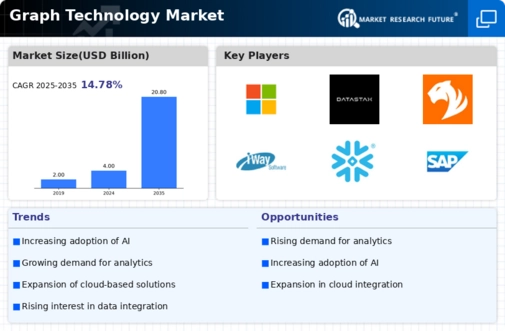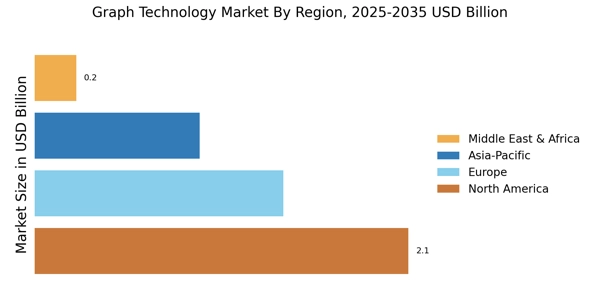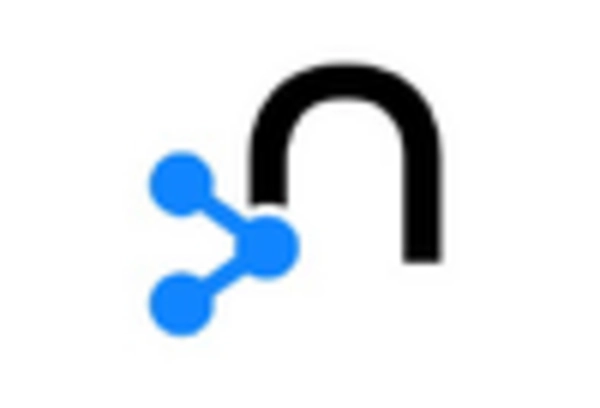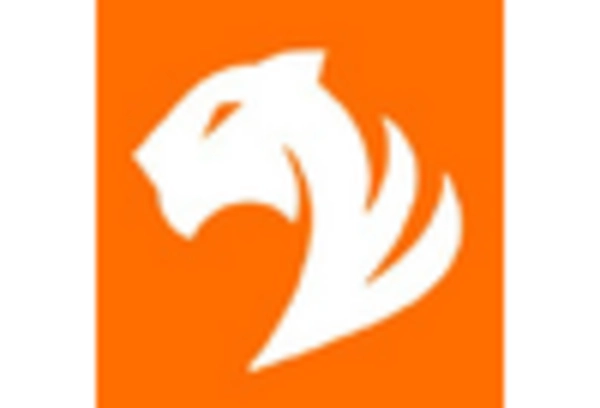The Graph Technology Market is currently characterized by a dynamic competitive landscape, driven by the increasing demand for advanced data management solutions and the growing complexity of data relationships. Key players such as Neo4j (US), Amazon Web Services (US), and Microsoft (US) are at the forefront, each adopting distinct strategies to enhance their market positioning. Neo4j (US) focuses on innovation through continuous product development, particularly in graph databases, while Amazon Web Services (US) leverages its extensive cloud infrastructure to offer scalable graph solutions. Microsoft (US) emphasizes integration with its existing software ecosystem, thereby enhancing user accessibility and functionality. Collectively, these strategies contribute to a competitive environment that is both collaborative and competitive, as companies seek to differentiate themselves through technological advancements and customer-centric solutions.
In terms of business tactics, companies are increasingly localizing their operations to better serve regional markets, optimizing supply chains to enhance efficiency, and investing in partnerships to expand their service offerings. The market structure appears moderately fragmented, with a mix of established players and emerging startups. This fragmentation allows for diverse approaches to graph technology, fostering innovation while also intensifying competition among key players.
In September 2025, Neo4j (US) announced a strategic partnership with a leading AI firm to integrate machine learning capabilities into its graph database solutions. This move is likely to enhance the analytical power of Neo4j's offerings, enabling clients to derive deeper insights from their data. The integration of AI into graph technology could potentially redefine how organizations leverage their data, positioning Neo4j as a leader in this evolving landscape.
In August 2025, Amazon Web Services (US) launched a new suite of graph analytics tools designed to simplify the process of data visualization and relationship mapping. This initiative is indicative of AWS's commitment to enhancing user experience and accessibility, which may attract a broader customer base. By streamlining complex data interactions, AWS could solidify its position as a go-to provider for businesses seeking to harness the power of graph technology.
In July 2025, Microsoft (US) unveiled an upgraded version of its Azure Cosmos DB, incorporating advanced graph capabilities that allow for more sophisticated data modeling. This enhancement is strategically significant as it aligns with the growing trend of integrating graph databases into cloud services, thereby reinforcing Microsoft's competitive edge in the cloud computing space. The ability to offer comprehensive data solutions could enhance customer retention and attract new clients seeking robust graph functionalities.
As of October 2025, the competitive trends in the Graph Technology Market are increasingly influenced by digitalization, sustainability, and the integration of artificial intelligence. Strategic alliances are becoming more prevalent, as companies recognize the value of collaboration in driving innovation and expanding market reach. Looking ahead, it is anticipated that competitive differentiation will evolve, shifting from traditional price-based competition to a focus on innovation, technological advancements, and supply chain reliability. This transition underscores the importance of adaptability and forward-thinking strategies in maintaining a competitive advantage in the rapidly evolving graph technology landscape.


















Leave a Comment